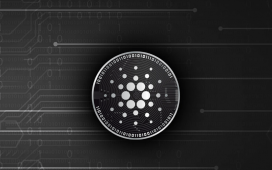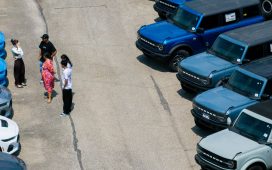Earlier that day, a taxi driver, while crossing a flyover, had pointed at the silos that were at the centre of the explosion, now as instantly recognisable as Hiroshima’s Genbaku/Atomic Bomb Dome.
Staying in downtown Beirut, three years later, the devastation is still visible to this day. Back in the hotel, I decided to watch the footage once again. One has to hit the ‘pause’ key quickly to capture how fast the fire in the harbour turned into a veritable apocalyptic event with a fiery geyser engulfing the cloud of smoke hanging overhead, culminating in a outwardly protruding mushroom of explosive air that seems to swallow up the city entirely. The devastation claimed at least 218 deaths and 7,000 injuries, leaving 300,000 people homeless and resulting in an estimated $15 billion in property damage.
Peering out over the site of the explosion, I tried to piece together the events that had led up to the event. Behind me was the recently reinvigorated historical district, now home to high-end shops with mainly European brands. Rumours suggest that most of the property has been bought off with Gulf money.
Just the other evening, we had sat down there for a fantastic dinner, paired with the most ostentatious cocktails and champagne. It was pretty much what Beirut had always promised to be – a Paris of the East. Yet, paying in local currency (the Lebanese pound or lira) had proven to be impossible. All prices were being quoted in dollars. As far as their own currency goes, the Lebanese had thrown in the towel.
The next day, we took a taxi to the temples of Baalbek, some 70 km from Beirut, close to the Syrian border. This is Hezbollah territory and alcohol is a decided no-no. It is also reminiscent of how eclectically divided Lebanon is. The city of Baalbek was founded by Maronite Catholics and the Druze – the latter a little-understood Abrahamic, monotheistic, and strikingly syncretic religion that draws from the teachings of 11th century Ismaili evangelist Hamza ibn Ali ibn Ahmad and the likes of Plato, Aristotle and Pythagoras. Lebanon’s unwritten National Pact of 1943 stipulates that the president should be a Maronite; the speaker of Parliament, a Shia; and the prime Minister, a Sunni. All this feels like fresh paint when considering the legacy of Baalbek, which in ancient Greek and Roman times was known as Heliopolis. It includes two of the largest and grandest Roman temple ruins: the Temples of Bacchus and Jupiter. Off the beaten path, the site still sees its share of daily visitors, although now mainly from the region as international tourists have all but disappeared, not least because of the reignited animosity between Israel and Lebanon. These monuments tower over visitors like none in Italy can, dwarfing even the Acropolis of Athens.
Baalbek’s heydays came to an end with the advent of early Christianity in the 4th century, after which it entered a deliriously confusing period of Muslim conquerors, all seeking to claim the ruinated site for themselves. Travelling around the region, Lebanon’s snow-capped peaks — from which it derives its original Phoenician name meaning white (‘Lbn’) – are a reassuringly peaceful sight.
On the way back to Beirut, our driver stopped at a local vineyard, in what is allegedly one of the oldest wine-producing regions in the world. With a rich full-bodied batch, we toasted to Lebanon’s history, with the hope of a less volatile and destructive future.











